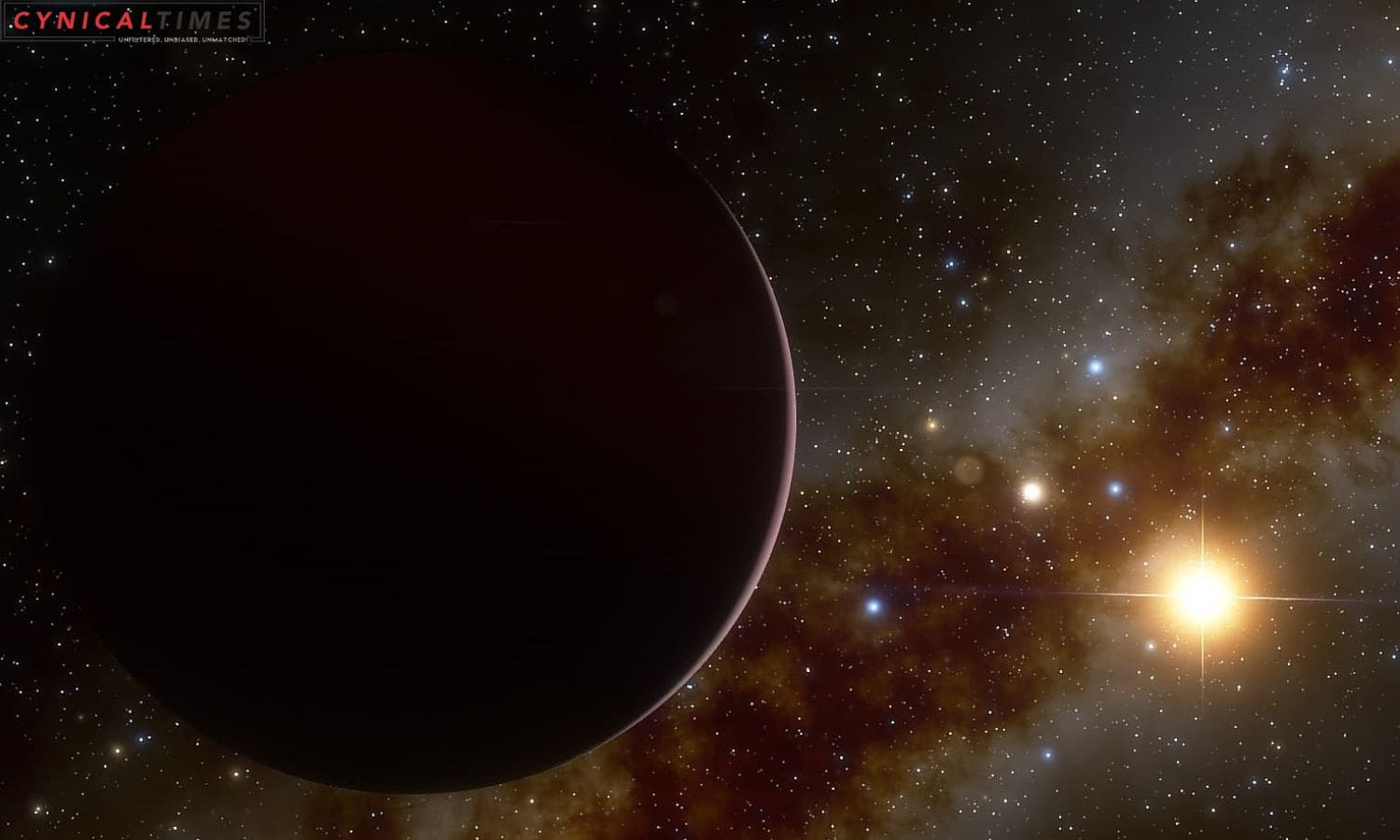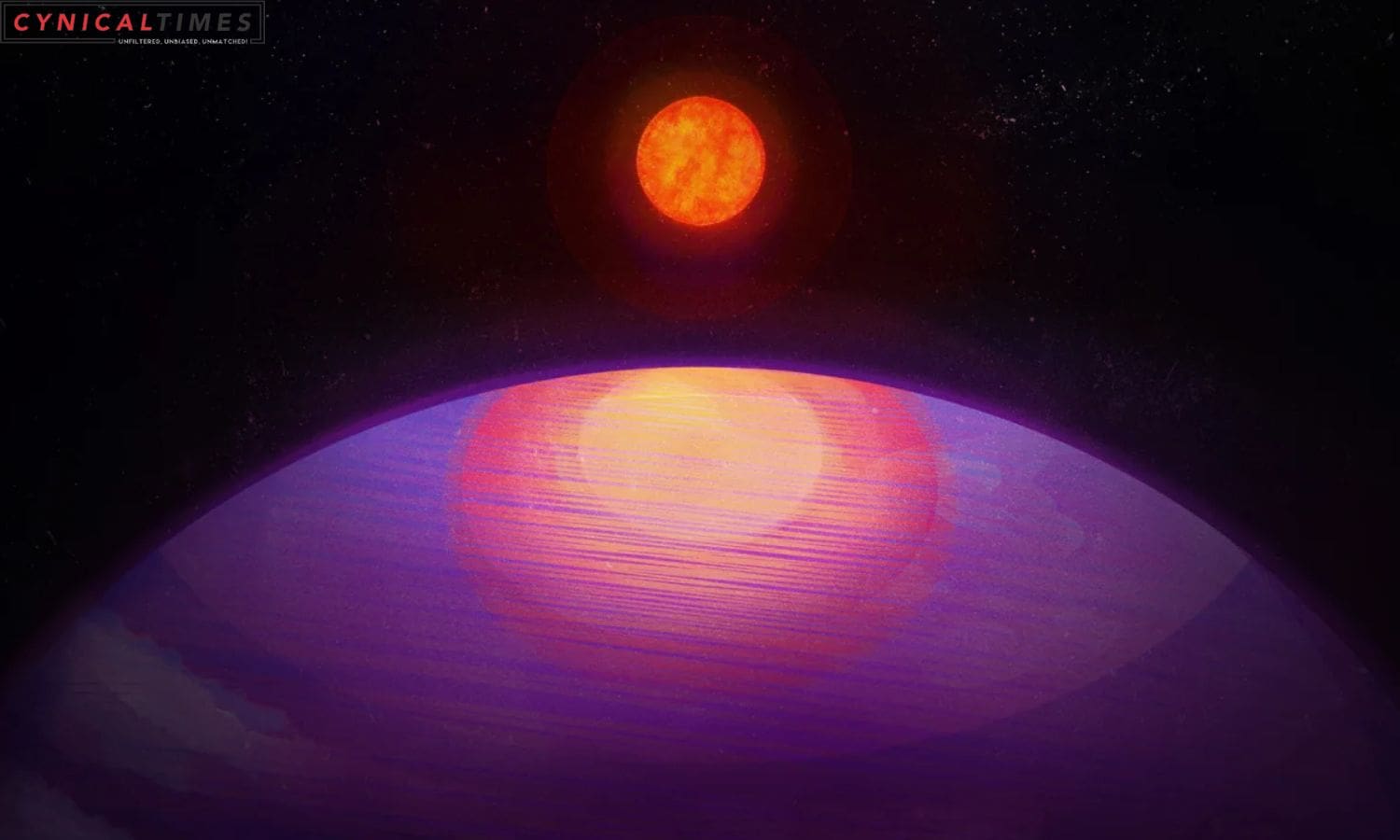Cosmic Surprise Rogue Planet: In a surprising twist, astronomers have stumbled upon an exoplanet that defies the expected norms of planet formation. This celestial oddity, named LHS 3154b, challenges established theories and opens new frontiers in our understanding of the vast universe.
Situated in orbit around an ultracool M-dwarf star called LHS 3154, which is notably smaller and cooler than our sun, this Neptune-mass exoplanet has thrown a cosmic curveball. The planet completes an astonishingly swift orbit around its star every 3.7 Earth days, making it the most massive known planet in close proximity to one of the coldest, low-mass stars.
Astronomers, utilizing the state-of-the-art Habitable Zone Planet Finder (HPF) on the Hobby-Eberly Telescope at the McDonald Observatory in Texas, made this groundbreaking discovery. The HPF, designed to detect planets within the habitable zone of small, cool stars, identified this anomaly approximately 51 light-years away from our solar system.


Also Read: Mars Odyssey Orbiter Unveils Unprecedented Horizon View
The unexpected nature of LHS 3154b has left scientists reeling, as it challenges established models of planet formation. Traditionally, stars give rise to planets through a process involving leftover materials forming a disk around the star. However, the mass of the star typically determines the amount of material available for planet formation.
In the case of LHS 3154, an M-dwarf star, which is known for having small, rocky planets, the planet-forming disk was assumed to lack the necessary solid mass to create such a sizable planet. This revelation prompts a fundamental reassessment of our understanding of how stars and planets come into existence.
The habitable zone, a crucial parameter for potential life-supporting conditions, is a key focus in this discovery. The planet’s close proximity to its ultracool star challenges conventional notions, leading astronomers to reconsider the dynamics of planetary habitability in relation to the star’s temperature.


Penn State professor of astronomy and astrophysics Suvrath Mahadevan leads the study team in analyzing this cosmic puzzle. Megan Delamer, a Penn State astronomy graduate student and study coauthor, emphasizes the planet’s hefty core, suggesting it needed more solid material to form.
This unexpected celestial puzzle adds a layer of complexity to our understanding of planetary systems. While similar massive planets have been found orbiting low-mass stars, LHS 3154b’s unique characteristics pose a profound challenge to existing planet formation theories. As astronomers grapple with this cosmic enigma, the discovery highlights the vast gaps in our comprehension of the universe and underscores the need for further exploration and inquiry.
In the realm of space exploration, LHS 3154b stands as a testament to the ever-unfolding mysteries awaiting discovery, urging scientists to rethink the fundamental processes that shape the cosmic tapestry.
Our Reader’s Queries
Has a rogue planet been found?
Astronomers have stumbled upon rogue planets that wander through interstellar space without any star to call home. Initially, the rogue planets discovered were massive, some even as big as Jupiter. But now, smaller rogue planets have also been identified.
Could a rogue planet support life?
According to Ravi Kopparapu, a planetary habitability expert at NASA’s Goddard Space Flight Center, the possibility of life on a rogue planet is not impossible, but it would be challenging. Life on a cold rogue world would need to rely on internal sources for energy since there is no star to provide it. Despite the difficulties, Kopparapu believes that life could potentially exist on such a planet.
What are rogue planets in the universe?
Rogue planets can either be formed within a planetary system and then ejected or they can form independently outside of one. The number of rogue planets in the Milky Way is estimated to be in the billions to trillions, but the Nancy Grace Roman Space Telescope is expected to provide a more precise estimate.
Could Earth become a rogue planet?
Without caution, Earth could receive an excessive amount of energy, causing it to reach solar escape velocity and leave the solar system forever. This would result in the planet becoming a rogue planet, wandering aimlessly in the vast expanse of the cosmos.

